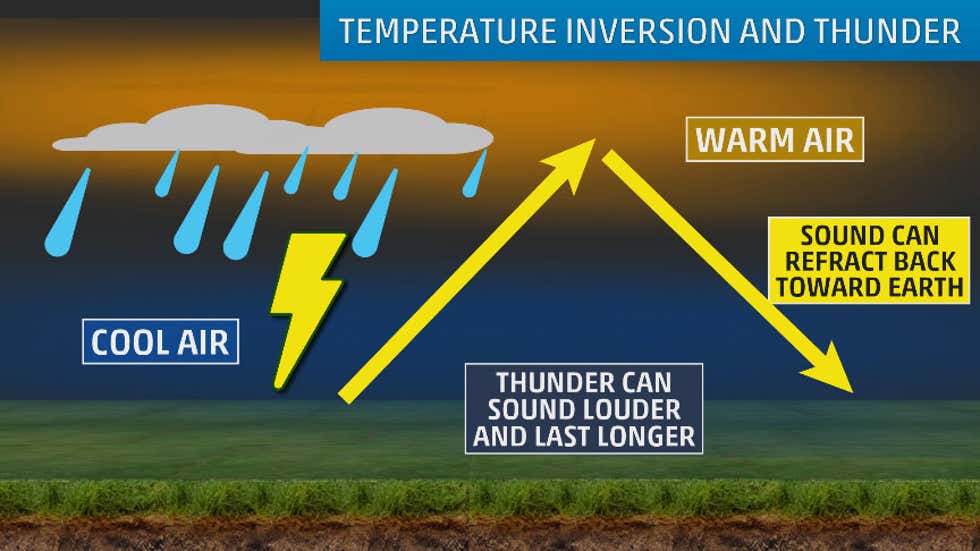Sometimes, we hear loud thunder, but there isn’t a thunderstorm overhead. In fact, there might even be clear skies above, but the thunder was as loud as if it occurred overhead.
While it sounds like science fiction – thunder from apparently nowhere – it all has to do with physics.
Thunderstorms that develop when temperatures near the surface are relatively cooler than the air above can result in louder, longer-lasting thunder than those in warmer weather.
This occurs because of how sound travels in colder conditions and something called a temperature inversion, or when a layer of warmer air is above a layer of cooler air near the surface.

When this happens, thunderstorms can develop in chillier conditions because the layer of warmer air aloft provides enough energy for thunderstorm development. These thunderstorms are often called elevated thunderstorms.
This warmer layer also can influence how thunder sounds. Thunder in warmer weather generally dissipates in all directions. However, when the air is cold at the surface, the warmer air higher in the atmosphere acts almost like a ceiling, trapping the sound and then refracting it back toward the ground.
This refraction can amplify the sound of thunder. It can also make the sound linger. Sound waves also move slower in cold air and faster in warmer air, amplifying these sound effects.

Back in 2022, on October 8th into 9th, an atmospheric sounding (a vertical profile of the atmosphere) showed temperature increases between 1000 and 975 millibar levels in the atmosphere, which generally occurs between 100 and 350 meters altitude, with a larger inversion between the 925 and 850 millibar levels, which generally occur between 780 and 1500 meters altitude.
This temperature inversion closer to the ground was sufficient to refract the sound of thunder back to Earth. This is why people across Central Trinidad were able to hear a thunderstorm ongoing across north-central and northeastern Trinidad.
Showers and thunderstorms are affecting Trinidad and Tobago associated with the Intertropical Convergence Zone. Based on research, the ITCZ in the Tropical Atlantic has its strongest activity occurring between 12:00 AM and 6:00 AM local time, with another peak during the Northern Hemisphere summer months between 12:00 PM to 3:00 PM.









